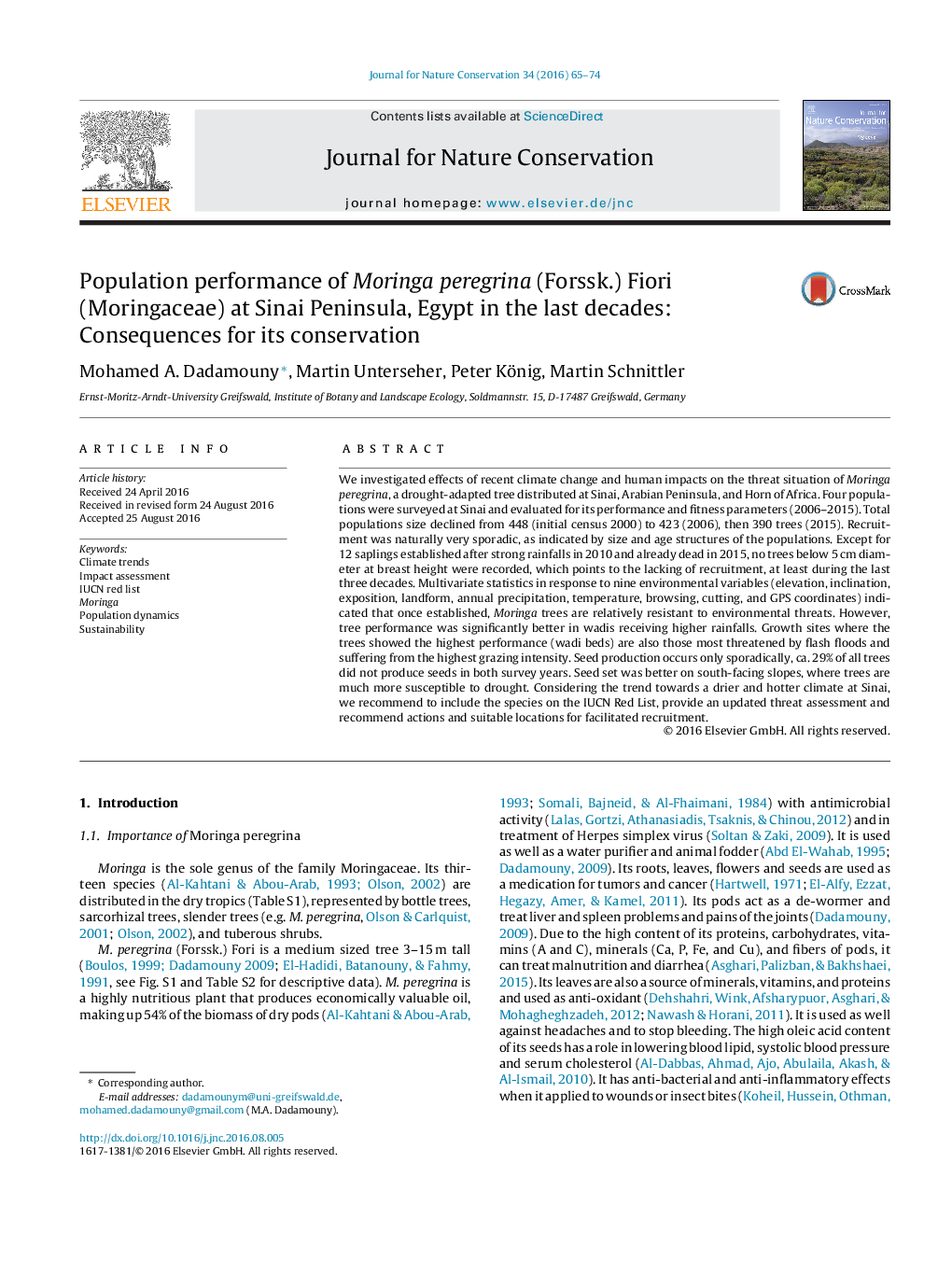| Article ID | Journal | Published Year | Pages | File Type |
|---|---|---|---|---|
| 4399708 | Journal for Nature Conservation | 2016 | 10 Pages |
Abstract
We investigated effects of recent climate change and human impacts on the threat situation of Moringa peregrina, a drought-adapted tree distributed at Sinai, Arabian Peninsula, and Horn of Africa. Four populations were surveyed at Sinai and evaluated for its performance and fitness parameters (2006-2015). Total populations size declined from 448 (initial census 2000) to 423 (2006), then 390 trees (2015). Recruitment was naturally very sporadic, as indicated by size and age structures of the populations. Except for 12 saplings established after strong rainfalls in 2010 and already dead in 2015, no trees below 5Â cm diameter at breast height were recorded, which points to the lacking of recruitment, at least during the last three decades. Multivariate statistics in response to nine environmental variables (elevation, inclination, exposition, landform, annual precipitation, temperature, browsing, cutting, and GPS coordinates) indicated that once established, Moringa trees are relatively resistant to environmental threats. However, tree performance was significantly better in wadis receiving higher rainfalls. Growth sites where the trees showed the highest performance (wadi beds) are also those most threatened by flash floods and suffering from the highest grazing intensity. Seed production occurs only sporadically, ca. 29% of all trees did not produce seeds in both survey years. Seed set was better on south-facing slopes, where trees are much more susceptible to drought. Considering the trend towards a drier and hotter climate at Sinai, we recommend to include the species on the IUCN Red List, provide an updated threat assessment and recommend actions and suitable locations for facilitated recruitment.
Related Topics
Physical Sciences and Engineering
Earth and Planetary Sciences
Earth and Planetary Sciences (General)
Authors
Mohamed A. Dadamouny, Martin Unterseher, Peter König, Martin Schnittler,
